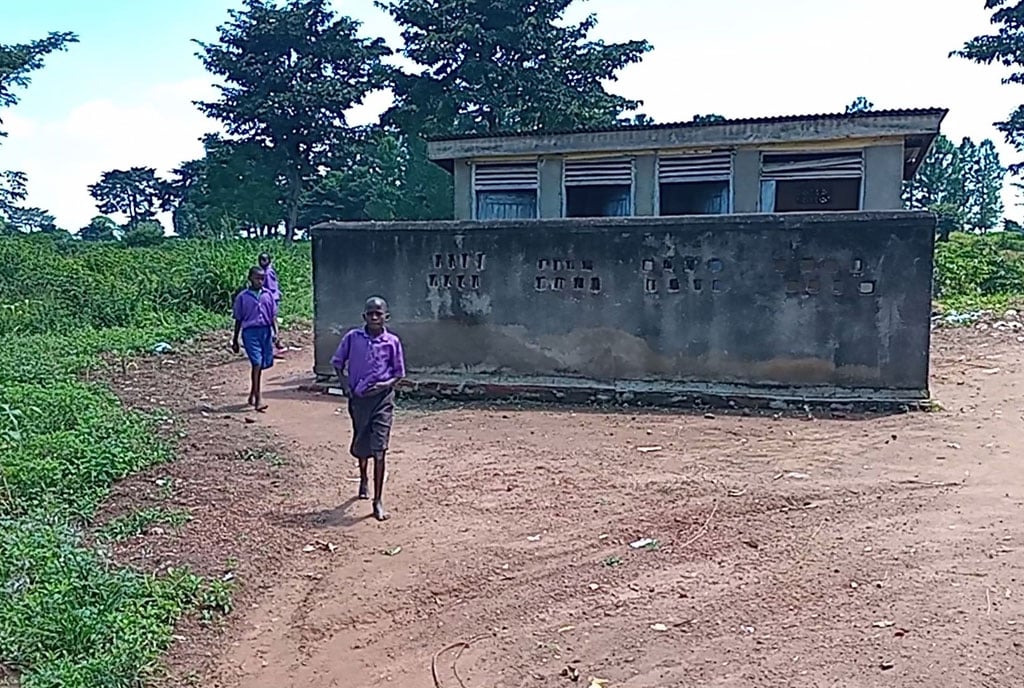Prime
Lake Kijanebarola bursts banks, cuts off major roads

Travellers wade through a flooded section of Lumbuggu-Lwamagga Road in Kyotera District on Friday last week. PHOTOS/AMBROSE MUSASIZI.
What you need to know:
Last week, we reported that fishermen and residents had woken up to a dry lake. New information indicates that the water body receded at one landing site.
Lake Kijanebarola has burst its banks, submerging major roads in Rakai District.
This comes just a week after the lake receded at Kalunga Landing Site near the border between Rakai and Isingiro districts, creating speculation among locals and fishermen that the water body had ‘migrated’ to another area.
A few days later, it emerged that the lake water had led to flooding at other landing sites and wetlands, submerging key roads in the area.
The most affected roads include Rwabaganda–Kyabuzare–Kalunga road, Kibaale–Ddyango –Endiizi road, Lumbugu–Lwamaggwa road, Lumbugu–Rakai road and Rakai–Byakabanda road.
Last week, we reported that fishermen and residents had woken up to a dry lake.
New information indicates that the water body receded at one landing site.
Transport challenges
Currently, travellers using the submerged roads have to either brave the fast-moving flood water on foot or use canoes.
Those going to Isingiro have resorted to using Kibaale –Kiziba–Ntatamukyi road, which makes the journey longer by 80km compared to 5km on the affected road.
In Ddwaniro, residents are now using Ddwaniro–Buyamo–Kagamba road, parting with between Shs10,000 and Shs20,000 for a journey that usually costs Shs7,000.
Ms Alice Kamuhanda, a resident of Isingiro District, says the floods cut off the road while she was in neigbouring Rakai District where she had gone to visit relatives.
“I am currently stuck at my relatives’ home because I can hardly cross the flooded road with my luggage. I fear the fast-moving flood water because it can knock me off my feet and I drown,” she told Daily Monitor on Monday.
She said some youth are currently making a killing by helping travellers cross the flooded sections of the road using canoes. The travellers pay between Shs3,000 and Shs5,000 per trip.
Mr Wangi Ssemanda, the chairperson of Ddyango Town Council at the border of Rakai and Isingiro, said farmers in the area are the most affected as they can no longer take their agricultural produce and cattle to the market.
“The heavy rain has reduced a bit, but there is continuous rise of water levels at some landing sites and wetlands, which has cut off roads. We suspect that water is coming from receded landing site of Kalunga,” he said.
Mr James Bwambale, a taxi driver plying the Kyotera –Lwamaggwa Road, said he stopped working last week after the road became impassable.
“Some of us have parked the vehicles because the road is impassable. We shall resume work when the situation normalises because driving in such floods spoils our car engines,” he said.
Mr Julius Ssentamu, the Rakai District engineer, said they are aware of the poor state of the roads, but that the district lacks funds to fix the problem.
“Our team has already assessed the extent of the damage, but we lack the funds to fix the roads. We have petitioned Uganda National Roads Authority (Unra) to come to our rescue,” he said.
In the neigbouring Kyotera District, the situation is not different. Elevated water level of River Kagera has cut off Kyaapa–Kasensero road that connects to Kasensero Landing Site, paralysing movement of people and goods to and from the landing site.
To cross the flooded section of the road, residents have been using canoes which charge them Shs5,000.
This has forced prices of commodities such as bananas, cassava, beer, and soda to go up as traders incur more costs to transport them to the landing site.
The 52km Kyaapa-Kasensero road has been in poor state for close to a decade despite the government making some minor repairs.
Mr Hakim Kisembo, a fisherman at Kasensero Landing Site, said due to the poor state of the road, more than 10 trucks destined for Kasensero are stranded on the slippery road.
Background
Lake Kijanebarola is a major water source for communities in Lyantonde, Rakai and Isingiro districts. But with the papyrus eating up the lake shores, it is getting increasingly difficult for families to make a living through agriculture, fishing and livestock farming. Its tributaries connect to both Lake Kacheera and River Kagera, which pour into Lake Victoria.
The Uganda National Meteorological Authority (UNMA) warned early this year that some parts of the country were likely to experience near to normal to above normal (wetter than average rainfall) between March and May, which was likely to lead to flash flooding in low lying areas.
Heavy rains have already wreaked havoc in other parts of the country claiming lives and destroying property worth millions of shillings.
Uganda enjoys two major rainy seasons (March-May) and (September-December), but due to climate change, the rains are often destructive and sometimes delay or come unexpectedly.
Compiled by Ambrose Musasizi, Al-Mahdi Ssenkabirwa &Wilson Kutamba



